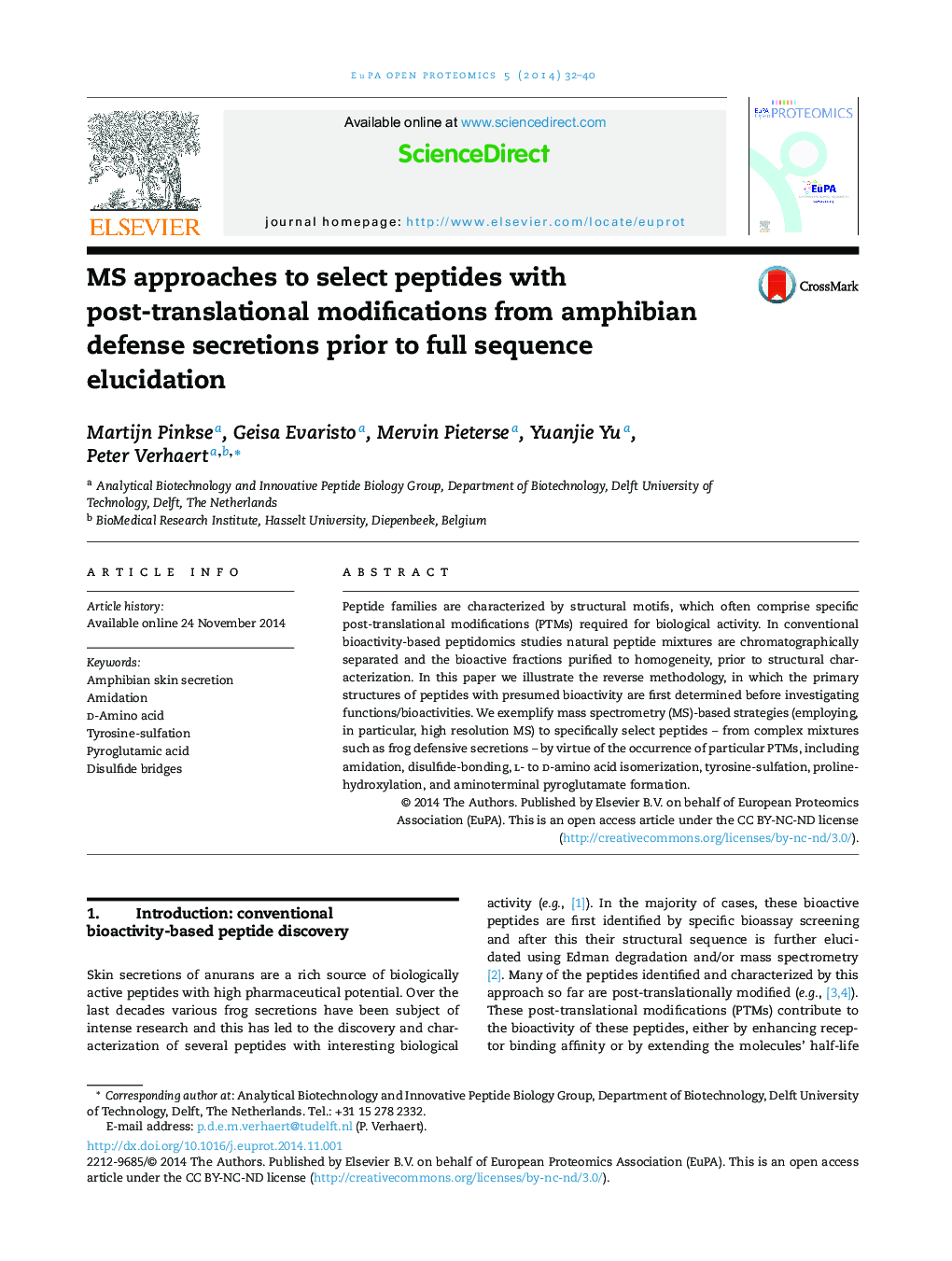| Article ID | Journal | Published Year | Pages | File Type |
|---|---|---|---|---|
| 1182944 | EuPA Open Proteomics | 2014 | 9 Pages |
•An LC/MS based strategy is described to elicit potential PTMs in peptides from amphibian skin secretions.•Focus is on PTMs previously reported in bioactive peptides.•The analyses rely on molecular mass and retention time differences, visualized in 2D plots constructed from LC/MS inputs.•Peptides likely to contain specific PTMs are highlighted in the 2D display, either directly or after PTM-specific chemical modifications.•PTM containing peptides spotted are subsequently submitted to thorough (high resolution) MS/MS analysis for de novo sequencing.
Peptide families are characterized by structural motifs, which often comprise specific post-translational modifications (PTMs) required for biological activity. In conventional bioactivity-based peptidomics studies natural peptide mixtures are chromatographically separated and the bioactive fractions purified to homogeneity, prior to structural characterization. In this paper we illustrate the reverse methodology, in which the primary structures of peptides with presumed bioactivity are first determined before investigating functions/bioactivities. We exemplify mass spectrometry (MS)-based strategies (employing, in particular, high resolution MS) to specifically select peptides – from complex mixtures such as frog defensive secretions – by virtue of the occurrence of particular PTMs, including amidation, disulfide-bonding, l- to d-amino acid isomerization, tyrosine-sulfation, proline-hydroxylation, and aminoterminal pyroglutamate formation.
Graphical abstractFigure optionsDownload full-size imageDownload as PowerPoint slide
